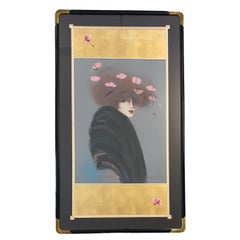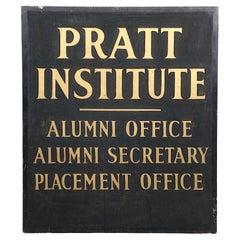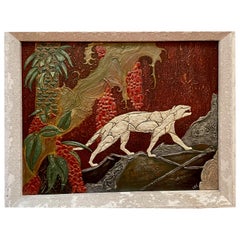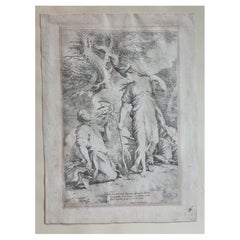Decorative Art
1830s Argentine Art Deco Antique Decorative Art
Bronze
20th Century Mexican Art Deco Decorative Art
Silver Leaf
Early 20th Century American Art Deco Decorative Art
Wood, Paint
1920s French Art Deco Vintage Decorative Art
Wood, Paint
1930s French Art Deco Vintage Decorative Art
Plaster
17th Century Italian Baroque Antique Decorative Art
Paper
Early 20th Century Italian Art Deco Decorative Art
Wood
18th Century Austrian Baroque Antique Decorative Art
Canvas, Wood
Early 20th Century European Art Deco Decorative Art
Plaster, Wood
Mid-20th Century Belgian Art Deco Decorative Art
Metal
18th Century French Baroque Antique Decorative Art
Wool, Silk
Early 20th Century English Art Deco Decorative Art
Ash, Maple, Oak, Walnut
2010s French Art Deco Decorative Art
Straw
Mid-20th Century Spanish Baroque Decorative Art
Brass
20th Century Art Deco Decorative Art
Acrylic, Paper
Late 19th Century Italian Baroque Antique Decorative Art
Canvas, Giltwood
20th Century Art Deco Decorative Art
Acrylic, Paper
17th Century Belgian Baroque Antique Decorative Art
Paper
1980s American Art Deco Vintage Decorative Art
Paper
1850s English Baroque Antique Decorative Art
Paper
Mid-20th Century Hungarian Art Deco Decorative Art
Ceramic
1930s Italian Art Deco Vintage Decorative Art
Wood
1980s French Art Deco Vintage Decorative Art
Gold Leaf
Early 20th Century French Art Deco Decorative Art
Metal, Brass
19th Century Italian Baroque Antique Decorative Art
Metal, Gold Leaf
1930s French Art Deco Vintage Decorative Art
Wood
17th Century Portuguese Baroque Antique Decorative Art
Porcelain
Early 20th Century Chinese Art Deco Decorative Art
Bronze
17th Century French Baroque Antique Decorative Art
Canvas, Giltwood
1960s North American Art Deco Vintage Decorative Art
Metal
1930s German Art Deco Vintage Decorative Art
Wool
Early 1800s English Baroque Antique Decorative Art
Paper
1950s American Art Deco Vintage Decorative Art
Ceramic
20th Century French Baroque Decorative Art
Giltwood
Early 1900s Italian Baroque Antique Decorative Art
Canvas, Giltwood
1920s English Art Deco Vintage Decorative Art
Stained Glass
Early 2000s French Art Deco Decorative Art
Plaster
20th Century American Art Deco Decorative Art
Glass, Paper
1950s Austrian Art Deco Vintage Decorative Art
Ceramic
1840s English Baroque Antique Decorative Art
Paper
17th Century Italian Baroque Antique Decorative Art
Paper
Early 20th Century French Art Deco Decorative Art
Canvas, Giltwood
1950s American Art Deco Vintage Decorative Art
Ceramic
18th Century Finnish Baroque Antique Decorative Art
Glass, Giltwood, Paint
Early 20th Century Dutch Art Deco Decorative Art
Metal, Brass, Zinc, Chrome
2010s British Baroque Decorative Art
Burlap, Plaster, Wood
17th Century Portuguese Baroque Antique Decorative Art
Porcelain
20th Century French Art Deco Decorative Art
Paint
20th Century American Art Deco Decorative Art
Glass, Paper
1940s English Art Deco Vintage Decorative Art
Earthenware
1930s French Art Deco Vintage Decorative Art
Marble
1920s Belgian Art Deco Vintage Decorative Art
Ceramic
Late 20th Century Portuguese Baroque Decorative Art
Delft, Faience, Terracotta
17th Century Portuguese Baroque Antique Decorative Art
Porcelain
2010s Nepalese Art Deco Decorative Art
Wool
17th Century Spanish Baroque Antique Decorative Art
Other
1790s Italian Baroque Antique Decorative Art
Canvas
17th Century Portuguese Baroque Antique Decorative Art
Porcelain
Antique, New and Vintage Decorative Art
Antique, new and vintage decorative art is crucial to personalizing your interior.
Bringing art into your home will help you create a warm and welcoming atmosphere, whether you are expecting to regularly host guests for cocktails in your living room or you are inclined to soak up some “me time” on weekends by curling up with a book in your library. After all, a room isn’t quite complete until you hang some art on the walls.
Choosing a piece of art for your interior is a matter of finding something that resonates with you. You should also consider what will work with your current decor. Keep in mind that a wide range of objects counts as decorative art — antique and vintage prints, paintings, wall-mounted sculptures and more. There is so much to choose from! And art can feel as deeply personal with the vintage posters that promoted your favorite classic films as it can with framed photographs of your loved ones.
Decorative art can set the mood for a room and will typically make for great conversation. When you find wall decor and decorations that speak to you, why not introduce them into your space? It will give you and your guests the opportunity to meaningfully engage with the art every time you see it. You can play with different styles, eras and colors. Mix and match pieces to integrate a refreshing pop of color or create a theme by dedicating a room to a color palette or certain time period. A great way to tie your layout together is to choose wall art that complements your decor and color scheme.
Folk art is an interesting category for its wide range of works across various media and the array of textures it can offer. Paper art is another versatile option because it will be easy to find a home for portraits, collages, drawings and other works in your space. With decorative paper art, you can also get creative with how you arrange your wall art. There are plenty of options that include hanging the works salon-style.
On 1stDibs, find a constantly growing collection of antique and vintage decorative art today.




